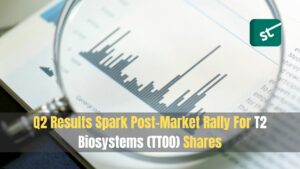T2 Biosystems, Inc. (NASDAQ: TTOO) continued its upward trajectory during the extended-session on Monday, marking a further increase of 3.64% to reach $4.55. This follows a notable regular-session surge of 18.81%, closing at $4.39. The uptick in TTOO stock value appears to be driven by recent developments, as no direct news correlates to this scenario.
Strategic Partnership With ECO Laboratory
In an effort to establish a strategic partnership, T2 Biosystems (TTOO) and ECO Laboratory, a clinical laboratory accredited under the Clinical Laboratory Improvement Amendments (CLIA) and situated in Massachusetts, recently signed a non-binding letter of intent (“LOI”). Working together on this project is ECO Laboratory’s founder, Karen Weeks, who has a wealth of experience and understanding in the field of Lyme diagnostics.
The primary focus of this collaboration is the launch of the T2Lyme Panel as a Laboratory Developed Test (LDT), aimed at early Lyme disease detection. Additionally, T2 Biosystems aims to establish a leading Lyme testing laboratory within the United States.
Revolutionizing Lyme Disease Detection
The T2Lyme Panel represents a groundbreaking direct-from-blood molecular diagnostic test tailored for early detection of Borrelia burgdorferi, the causative agent of Lyme disease in the United States. Lyme disease stands as the predominant vector-borne ailment in America, with approximately 3.4 million tests conducted annually.
Presently, the diagnostic protocol relies on a two-tiered antibody test algorithm, which is only reliably effective four to eight weeks post-infection. Unchecked, the bacteria can disseminate throughout the body, complicating treatment efforts. Early Lyme disease symptoms mimic those of the flu, yet Borrelia burgdorferi infections may lead to chronic and incapacitating conditions.
Future Outlook
T2 Biosystems is diligently concluding internal validation and verification processes, anticipating readiness for product launch by the third quarter of 2024. This endeavor signifies a critical advancement in addressing the pressing need for highly sensitive and early Lyme disease detection, potentially mitigating the severity of its long-term impact on affected individuals.













